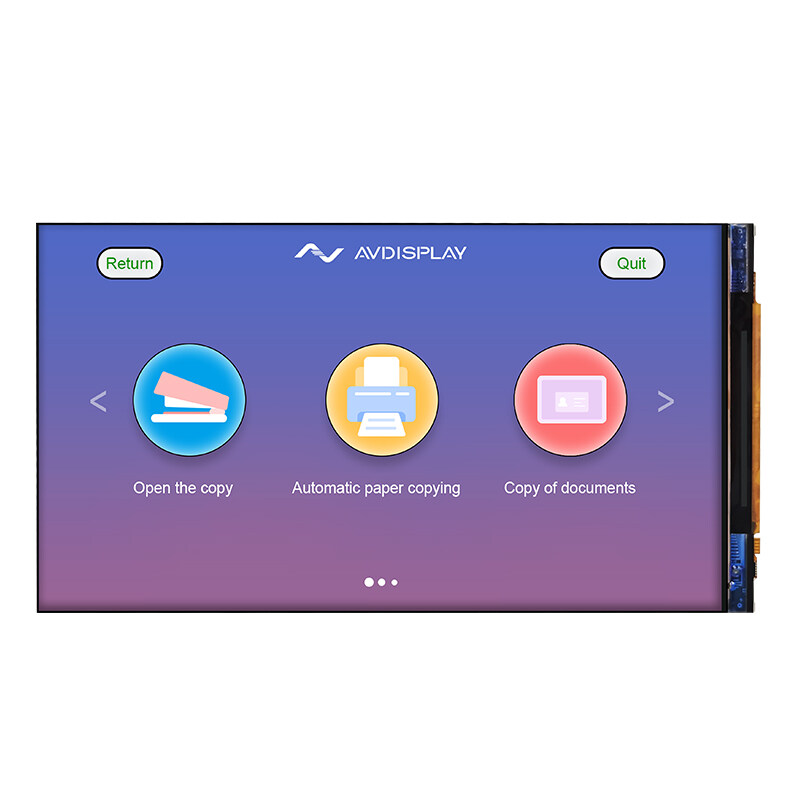Email format error
Email cannot be empty
Email already exists
6-20 characters(letters plus numbers only)
The password is inconsistent
Email format error
Email cannot be empty
Email does not exist
6-20 characters(letters plus numbers only)
The password is inconsistent


When it comes to choosing the right display technology for your device, consumers and manufacturers often face a common dilemma: OLED (Organic Light Emitting Diode) or TFT (Thin Film Transistor)? Both technologies have their strengths, but which one is more suitable for your needs? In this article, we will dive into the differences between OLED vs. TFT, explore the advantages of each, and provide practical advice on which display technology is the best choice for different devices.
To make an informed decision, it's important to first understand the core principles behind OLED and TFT displays.
OLED displays use organic compounds that emit light when an electric current is passed through them. Each pixel in an OLED display is self-illuminating, which means the display does not require a backlight. This characteristic leads to deeper blacks, higher contrast ratios, and better color accuracy. OLED screens are also known for their flexibility, allowing for curved or even foldable displays.
On the other hand, TFT is a type of LCD (Liquid Crystal Display) technology that uses thin-film transistors to control the pixels on the screen. TFT displays rely on a backlight to illuminate the liquid crystals, which means the color and brightness are dependent on the quality of the backlight. While TFT technology has improved significantly, it still doesn't match OLED in terms of color vibrancy or contrast.
When comparing OLED vs. TFT, OLED displays stand out in several key areas:
OLED screens are known for their rich color reproduction and deep blacks. Since each pixel emits its own light, it can be turned on or off individually. This results in perfect blacks, which are impossible to achieve with a backlit LCD (like TFT). The result is a display with richer colors, higher contrast ratios, and more vibrant visuals.
OLED displays have a faster response time, which means they are ideal for high-speed applications, such as gaming or watching fast-paced videos. The quick refresh rate of OLED screens ensures that images appear clear and sharp, even during fast-motion scenes.
One of the most significant advantages of OLED is its flexibility. OLED displays are incredibly thin and can be manufactured to fit unique form factors, such as curved or foldable screens. This makes OLED a great choice for modern, sleek devices, especially in high-end smartphones or cutting-edge televisions.
While OLED offers impressive visual capabilities, TFT has its own set of advantages that might make it a better choice for certain devices:
TFT technology is more affordable compared to OLED. If you're designing a budget-friendly device or are working with tight cost constraints, TFT is the clear winner. For entry-level smartphones or basic LCD monitors, TFT is often the most practical option.
TFT displays tend to be more durable than OLEDs. OLED screens can suffer from issues like burn-in, where static images persist on the screen. TFT, being a backlit technology, doesn’t have this problem and is better suited for environments where longevity is critical.
While OLED screens generally offer good viewing angles, TFT displays tend to perform better in terms of brightness across wide angles. This makes them a solid choice for devices where the display will be viewed by multiple people, such as TVs or public kiosks.
Let's take a look at how OLED vs. TFT plays out in different types of devices:
When it comes to smartphones, OLED is often the preferred choice for high-end models. Premium smartphones like the iPhone and Galaxy S series use OLED displays for their vibrant colors and deep contrast, providing a more immersive viewing experience. However, budget smartphones tend to use TFT or other LCD technologies to keep costs down.
In tablets and laptops, TFT displays are more commonly used, especially in the mid-range to budget categories. They offer decent performance at a lower cost. OLED tablets, however, are starting to make their way into the market, especially in high-end devices, where color performance is a priority.
For home entertainment, OLED TVs provide an unmatched viewing experience with their deep blacks and incredible contrast. However, they are also more expensive. TFT LCD TVs, while offering a more affordable alternative, often fall short in terms of black levels and contrast but are still widely popular due to their cost-effectiveness.
In devices like smartwatches, OLED displays are the go-to choice due to their thin profile, vibrant colors, and low power consumption. These features are essential for wearables, where battery life and compactness are important factors.
For industrial applications or automotive displays, TFT technology is often preferred because of its reliability, wider viewing angles, and better visibility in bright conditions. In environments where durability and cost are more important than perfect color accuracy, TFT shines.
When deciding between OLED vs. TFT, there are several factors to consider:
In summary, OLED and TFT screens each have their pros and cons. OLED is better for high-end devices because it offers better color accuracy, contrast, and flexibility. TFT is more affordable and durable, making it suitable for budget devices and industrial uses.
The decision between OLED and TFT should be based on your device's needs, budget, and where it will be used. Choose OLED for top-notch image quality or TFT for a more cost-effective and reliable option.
For more in-depth technical guides and product recommendations, feel free to explore our other articles on display technology for devices or reach out to our experts for personalized advice.